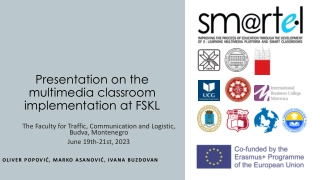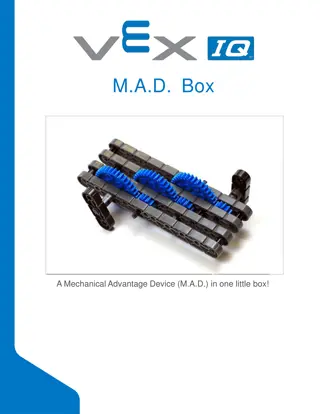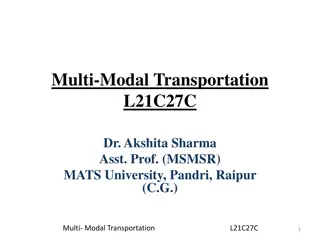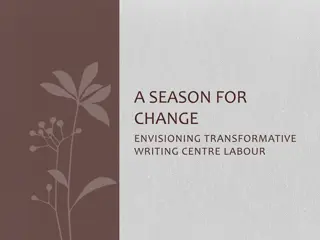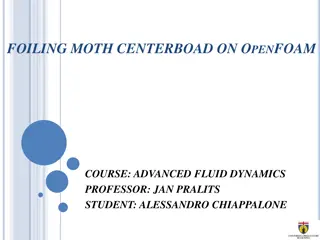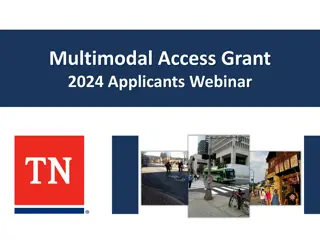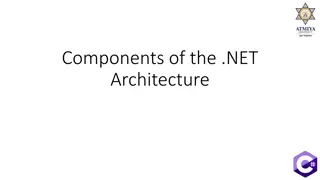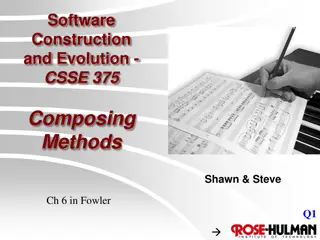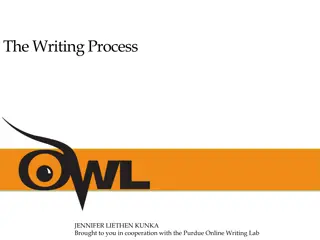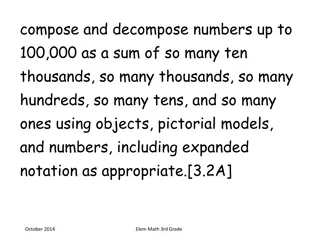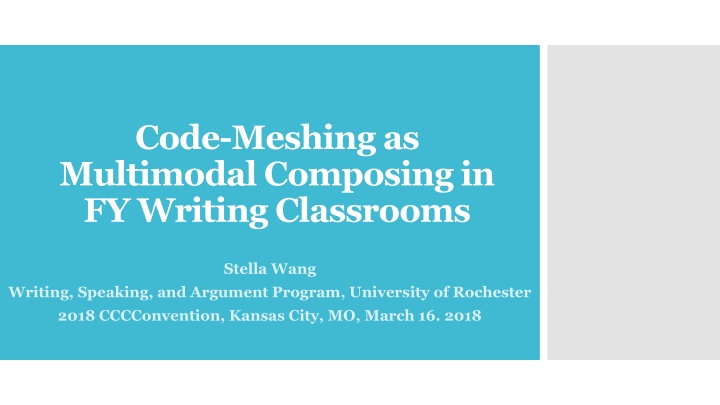
Code Meshing in FY Writing Classrooms: Understanding Black Dialect Patterns
Explore the distinctive features of Black Dialect in structure and usage, focusing on the habitual be patterns and their significance. Learn how these linguistic nuances impact communication and expression in writing classrooms.
Download Presentation

Please find below an Image/Link to download the presentation.
The content on the website is provided AS IS for your information and personal use only. It may not be sold, licensed, or shared on other websites without obtaining consent from the author. If you encounter any issues during the download, it is possible that the publisher has removed the file from their server.
You are allowed to download the files provided on this website for personal or commercial use, subject to the condition that they are used lawfully. All files are the property of their respective owners.
The content on the website is provided AS IS for your information and personal use only. It may not be sold, licensed, or shared on other websites without obtaining consent from the author.
E N D
Presentation Transcript
Code-Meshing as Multimodal Composing in FY Writing Classrooms Stella Wang Writing, Speaking, and Argument Program, University of Rochester 2018 CCCConvention, Kansas City, MO, March 16. 2018
1The most distinctive differences in the structure of Black Dialect are patterns using be (sometimes written and pronounced as bees or be s). 2 These forms are mainly used to indicate a condition that occurs habitually. 3 Be is omitted if the condition or event is not one that is repeated or recurring. 4 For example, The coffee bees cold means Every day the coffee s cold, which is different from The coffee cold which means Today the coffee s cold. 5 In other words if you the cook and The coffee cold, you might only just get talked about that day, but if The coffee bees cold, pretty soon you ain t gon have no job! The habitual Be in African American English (Smitherman, 1977, p. 19)
1The most distinctive differences in the structure of Black Dialect are patterns using be (sometimes written and pronounced as bees or be s). 2 These forms are mainly used to indicate a condition that occurs habitually. 3 Be is omitted if the condition or event is not one that is repeated or recurring. 4 For example, The coffee bees cold means Every day the coffee s cold, which is different from The coffee cold which means Today the coffee s cold. 5 In other words if you the cook and The coffee cold, you might only just get talked about that day, but if The coffee bees cold, pretty soon you ain t gon have no job! (Smitherman, 1977, p. 19) Language types
1The most distinctive differences in the structure of Black Dialect are patterns using be (sometimes written and pronounced as bees or be s). 2 These forms are mainly used to indicate a condition that occurs habitually. 3 Be is omitted if the condition or event is not one that is repeated or recurring. 4 For example, The coffee bees cold means Every day the coffee s cold, which is different from The coffee cold which means Today the coffee s cold. 5 In other words if you the cook and The coffee cold, you might only just get talked about that day, but if The coffee bees cold, pretty soon you ain t gon have no job! (Smitherman, 1977, p. 19) Levels of formality or, registers
1The most distinctive differences in the structure of Black Dialect are patterns using be (sometimes written and pronounced as bees or be s). 2 These forms are mainly used to indicate a condition that occurs habitually. 3 Be is omitted if the condition or event is not one that is repeated or recurring. 4 For example, The coffee bees cold means Every day the coffee s cold, which is different from The coffee cold which means Today the coffee s cold. 5 In other words if you the cook and The coffee cold, you might only just get talked about that day, but if The coffee bees cold, pretty soon you ain t gon have no job! (Smitherman, 1977, p. 19) Mulimodality
1The most distinctive differences in the structure of Black Dialect are patterns using be (sometimes written and pronounced as bees or be s). 2 These forms are mainly used to indicate a condition that occurs habitually. 3 Be is omitted if the condition or event is not one that is repeated or recurring. 4 For example, The coffee bees cold means Every day the coffee s cold, which is different from The coffee cold which means Today the coffee s cold. 5 In other words if you the cook and The coffee cold, you might only just get talked about that day, but if The coffee bees cold, pretty soon you ain t gon have no job! (Smitherman, 1977, p. 19) Mulimodality
1The most distinctive differences in the structure of Black Dialect are patterns using be (sometimes written and pronounced as bees or be s). 2 These forms are mainly used to indicate a condition that occurs habitually. 3 Be is omitted if the condition or event is not one that is repeated or recurring. 4 For example, The coffee bees cold means Every day the coffee s cold, which is different from The coffee cold which means Today the coffee s cold. 5 In other words if you the cook and The coffee cold, you might only just get talked about that day, but if The coffee bees cold, pretty soon you ain t gon have no job! (Smitherman, 1977, p. 19) Voice and Design
In addition to mixing different languages (in this case, AAE and standard English), code- meshing can also involve shifting across different registers or language of different levels of formality (in this case, the quote shifts between an academic text and a conversational text). Code-meshing can be enhanced and is often enhanced through aural and visual means, that is, via multimodal strategies. As the text moves in and out of different linguistic codes in the quote, code-meshing has the potential to evoke a range of sensory, affective, and epistemological responses in the readers as well as the writer. How code- meshing works in Smitherman s quote
The way code-meshing works can be explained by the concept of multiliteracies pedagogy of the New London Group (1996; Cope, & Kalantzis, 2000; Leverick, 2015). Code- meshing, multiliteracies pedagogy, and sociolinguistics theories Specifically in light of the multiliteracies framework, 1) literacy practices, not least writing, are multimodal by default and 2) the writer develops a metalinguistic awareness and is held up as the Designer of their text. Code-meshing allows writers to discover their voice, negotiate their identity, while constructing texts that have the potential to move beyond the dominant discourse and can be generative and transformative at the discourse level (Lam, 2000; Michael-Luna & Canagarajah, 2007; Young, 2010; Canagarajah, 2011; Horner, Lu, Royster, & Trimbur, 2011).
Pertaining to consciousness raising and critical language use, code-meshing also requires substantial audience participation (Gee 1986, 2000; Villanueva, 2013; Lovejoy, 2014). Code- meshing, multiliteracies pedagogy, and sociolinguistics theories While the result can be rewarding to both the writer and the reader, there are risks of communication breakdown that the writer needs to be aware of and overcome. Mastering code-meshing does not automatically ensure inclusivity, equal access to social resources and opportunities, or eradication of racism and linguistic injustice (Atkinson, & Kelly-Holmes, 2011; Leonard, 2013). More studies and more work are needed to overcome the influence of other social factors on the issues of equal access and social mobility.
Atkinson, D., & Kelly-Holmes, H. (2011). Codeswitching, identity and ownership in Irish radio comedy. Journal of Pragmatics 43: 251-260 Canagarajah, S. (2011). Codemeshing in academic writing: Identifying teachable strategies of translanguaging. The Modern Language Journal 95(3), 401-417. Cope, B., & Kalantzis, M. (2000). Design for social futures. In B. Cope & M Kalantzis (Eds.), Multiliteracies: Literacy learning and the design of social futures (pp. 201-234). London: Routledge. Gee, J. P. (1986). Review of Orality ad literacy: From the savage mind to ways with the words. TESOL Quarterly 20(4), 719-746. Gee, J. P. (2000). New people in new worlds: networks, the new capitalism and schools. In B. Cope & M Kalantzis (Eds.), Multiliteracies: Literacy learning and the design of social futures (pp. 42-66). London: Routledge. Horner, B., Lu, M-Z., Royster, J., & Trimbur, J. (2011). Language difference in writing: Toward a translingual approach. College English, 73(3), 303-321. Lam, W. S. E. (2000). L2 literacy and the design of the self: A case study of a teenager writing on the Internet. TESOL Quarterly 34(3), 457-482. Laverick, E. K. (2015). Code-meshing within a multimodal framework. Computers and Composition Online. Retrieved from http://cconlinejournal.org/fall15/laverick/ Leonard, R. L. (2013). Traveling literacies: Multilingual writing on the move. Research in the Teaching of English 48(1), 13-37. Lovejoy, K. B. (2014). Code-meshing and culturally relevant pedagogy for college writing instruction. In V. A. Young, R. Barrett, Y. Young-Rivera, and K. B, Lovejoy (Eds.) Other People s English, Code- meshing, code-switching, and African American literacy (pp. 119-51). New York: Teachers College. Michael-Luna, S., & Canagarajah, A. S. (2007). Multilingual academic literacies: Pedagogical foundations for code meshing in primary and higher education. Journal of Applied Linguistics 4(1), 55-77. The New London Group. (1996). A pedagogy of multiliteracies: Designing social futures. Harvard Educational Review 66(1) 60-92. Villanueva, V. (2013). Subversive complicity and basic writing across the curriculum. Journal of Basic Writing 32(1): 97-110. Young, V. A. (2010). Should writer s use they own English?. Iowa Journal of Cultural Studies, 12(1), 110-117. References

